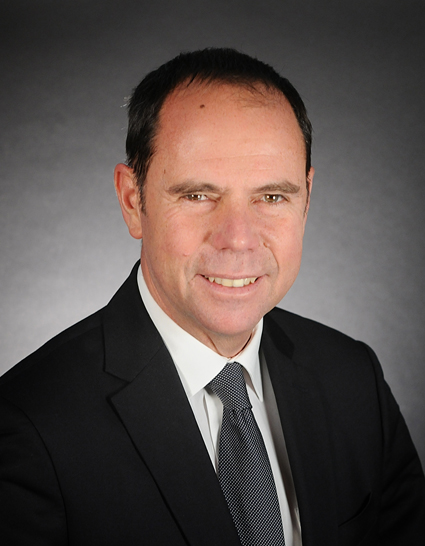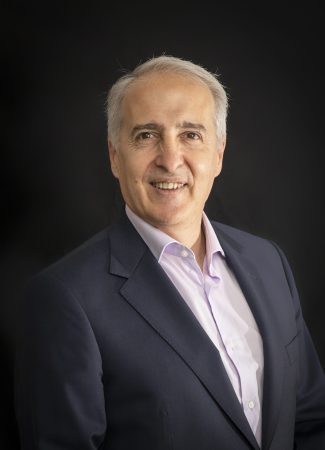Three reports analyse the 28 April blackout in Spain: what do they reveal?
In just one week, three key reports have been published on the major blackout that affected Spain on 28 April. The Ministry for Ecological Transition and Demographic Challenge (MITECO) on 17 June. The following day, Red Eléctrica de España (REE) and on 23 June, the Association of Electricity Companies (AELEC). Two reports have yet to be released: one by the National Commission for Markets and Competition (CNMC), and the other by ENTSO-E.
Frequency oscillations: the prelude to blackout
All three reports agree on the frequency oscillations recorded in the network during the morning before the blackout. The first of 0.2 Hz, appear to have a natural origin. According to REE, they are compatible with an inter-area oscillation of the synchronised European electricity system. The AELEC report qualifies that these changes in the mix correspond to a reduction in the number of combined cycle plants connected to the system and that, therefore, these oscillations could be linked to the generation schedule for that day. In any case, these initial disturbances were absorbed by the grid without the need for significant corrective measures by REE.
The first big shock: 12:03 p.m.
At 12:03, an oscillation of higher magnitude (0.6 Hz) was recorded, which lasted for 4 minutes and 42 seconds, weakening the system’s ability to dampen disturbances. This oscillation, classified as forced and local in nature, originated (according to the REE report) at a photovoltaic plant located in the province of Badajoz. In response, REE activated several measures:
- Reduction of the export trade with France by 800 MW, setting the programme at 1,500 MW in the export direction.
- Change of the mode of operation of the HVDC link with France at constant power (target: 1,000 MW from Spain to France).
- The network was reinforced by connecting five 400 kV circuits that were disconnected in order to lower the impedance of the system.
- Opening of ballasts to counteract the voltage drop caused by oscillations.
An increasingly tense situation
Despite these corrective actions, at 12:16 another oscillation of 0.6 Hz occurred, which again caused voltage drops in the grid. As a result, more reactors were activated to deal with it. At 12:19 p.m., another oscillation was recorded, with a lower frequency (0.2 Hz) but characterized by a much higher amplitude than the previous ones (up to 200 mHz). The origin of this oscillation is attributed to an inter-area oscillation derived from the East-Central-West continental mode of the European electricity system.
Translated with DeepL.com (free version)
In response to this new disturbance, new measures were taken:
- New 400 kV line connections for impedance reduction.
- Reduction of the export exchange with France to 1,000 MW (with the HVDC link sending 1,000 MW from Spain to France implies zero exchange balance for the AC lines). This means a total reduction of 1,300 MW of exchange.
- Reduction of the export exchange with Portugal from 2,545 MW to 2,000 MW.
At 12:22, once the frequency had stabilised, the voltage began to rise within operating margins. In response, REE initiated the coupling of reactors in different substations to slow down this rise. REE stresses that, unlike the first ones, the latter oscillations were not of natural origin, but “forced”. Its analysis points to a photovoltaic plant in Badajoz as a possible trigger.
Did corrective measures weaken the system?
One of the key questions is whether the mitigating actions themselves could, paradoxically, have made the system more vulnerable to subsequent disturbances. This hypothesis is strongly supported in the AELEC report, which even estimates the increase in reactive generation caused by these measures at 3 GVAr, with a particularly pronounced imbalance in the south.
REE also acknowledges that these actions made it possible to control the situation, but at the cost of raising the system voltage. The following is a more detailed analysis of the impact of the adopted measures:
- Reinforcement of the network grid: The connection of five 400 kV lines helped to reduce impedances but also increased reactive power flows. If not properly absorbed, this can lead to a dangerous voltage increase. AELEC points out that the reconnection of lines that had been inactive for days aggravated the overvoltage situation.
- Change in the interconnection with France: Switching from AC to DC helped stabilise the initial oscillations but may have reduced the flexibility of the system in the face of later disturbances. The AELEC report indicates that a more detailed analysis is required to fully assess its impact.
Despite signs of system recovery, the stress continued to increase. Initially within the admissible limits, it eventually exceeded them, suggesting that control measures were insufficient or inadequate.
Why was the power surge not contained?
The MITECO report suggests three possible causes for the system’s lack of automatic capacity to handle the power surge:
- Failure in planning: The system operator (REE) did not schedule enough connected conventional power plants to regulate the voltage.
- Failure of implementation: Planned plants did not meet their function, despite being available.
- Combination of both: There were not enough power plants, nor did the available ones perform well.
A key discrepancy arises here:
- REE defends that there was a failure of execution: the plants did not respond in accordance with Operating Procedure 7.4.
- AELEC points to a failure of planning, stressing that the number of allocated clusters was the lowest of the year and concentrated in the north, which limited their effectiveness.
AELEC’s report highlights in particularly the fact that REE decided not to replace a CCGT scheduled for the day of the blackout in the southern area that had been declared unavailable the previous evening due to a fire. However, REE replies that, despite this outage, the system was still safe.
A massive disconnection too early?
The second major focus of the debate is the sudden disconnection of more than 2,000 MW of generation, in a matter of seconds and in different installations.
- MITECO and REE detail the sequence of these disconnections.
- AELEC suggests that there must be a systemic cause for this simultaneous and generalized behaviour.
At 12:32:57 h a transformer tripped in a substation in Granada. REE argues in its report that the disconnection of this facility is incorrect because the voltage in the transmission grid was within the ranges established in the regulations. At 12:33:16 h, barely 19 seconds later, another disconnection occurred in Badajoz. Once again, REE states that the voltage levels were within the established margins.
These disconnections caused a further increase in system voltage, as the reactive power absorption capacity of these generators was lost and the power flow from south to north was reduced.
As a result of all these events, a cascading loss of generation power occurred. This implied the simultaneous loss of dynamic voltage control capability and reactive power absorption as conventional technologies lost support, culminating in an electrical zero of the system.
Conclusion
The three reports published so far coincide in pointing out the multifactorial nature of the blackout, although each one emphasizes different aspects according to the role and competencies of the issuing agency.
While REE defends that the system’s capacity to control voltage was sufficient, both MITECO and AELEC point out that this capacity was the lowest recorded throughout the year and consider it clearly insufficient.
On the other hand, REE and MITECO claim that some plants did not correctly follow Operating Procedure 7.4 for voltage control in the transmission grid, a point that AELEC does not address in its report.
In the absence of data published by the System Operator, AELEC avoids going into the phenomenon of cascading disconnections of generation facilities. In turn, REE claims that the disconnections occurred incorrectly.
With the ENTSO-E and CNMC reports still pending, this is the current status of the analysis of the April 28 blackout. From Haya Energy Solutions we will keep you informed of any relevant news.
Pablo Gandullo Romero







